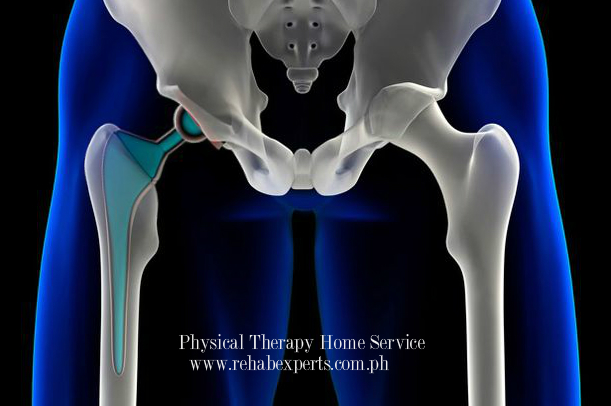DO’S AND DON’TS FOR PATIENTS WITH HIP REPLACEMENT (Home Instructions)
The hip joint is the largest joint found in the human body. It is also called the ball and socket joint which forms the head of the femur or the ball, and the acetabulum or the socket. Many Filipinos undergo hip replacement in their lifetime. Most of our patients who underwent hip replacement belong to ages 60 to 80 and usually reside in Quezon City. They had to have this procedure because of the following reasons: fracture, arthritis, or dislocation, everyone of which cause damage on the hip joint. There are two types of hip replacement: The partial hip repacement which replaces only the head of the femur. Then there is the total hip replacement which replacement the head of the femur together with the acetabulum.
After the surgery, the orthopeodic surgeon has several home instructions for the patient and his family in order to avoid damaging the new hip implant. The physical therapist or physiotherapist in turn provides rehabilitation for the patient in order to make him independent once more in tackling his daily activities.
Don’ts:
- Don’t flex your hip beyond 900. The patient should avoid sitting on low chairs. When he has to use the toilet he has to use an elevated toilet seat. He should also avoid picking up things from the floor.
- Don’t cross your knees. When the patient is about to sleep he has to place a pillow in between his knees.
- Don’t rotate your hip beyond 450. The patient should avoid crossing his leg over the other.
Do’s:
- Keep your affected leg on the front. This is for the healthy leg to support the affected leg when getting up from the bed, or when transferring.
- Strengthening exercises for the surrounding muscles. The patient should strengthen his quadriceps, hamstring, gastrocnemius and the other leg muscles to facilitate the healing process. This will also help the patient recover his capacity to walk faster .
- Cold compress for 20 mins. This help in assuaging the swelling and the pain. The cold compress must not directly touch the skin. Use a towel between the skin and the cold compress.
- The patient should have a regular checkup with his orthopedic surgeon. It is advisable that the surgeon who performed the surgery be the one to monitor the progression of the patient as well. He will be the one who will also prescribe the right medication.
- Have regular physical therapy administered by a certified physical therapist or physiotherapist. He will guide the patient in performing the proper strengthening exercises in avoiding further injury. He will also be the one managing the pain and the swelling arising from the surgery.
The do’s and don’ts mentioned here should only serve as basic guidance. The supervision of medical professionals still remains necessary. If you have underwent a hip replacement surgery, we at Rehab Experts are ready to provide you with physical therapy home service anywhere in Metro Manila, Philippines.

